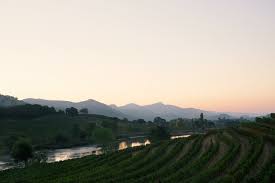This is a sponsored guest post.
Among the many historic moments in the world of wine would be May 24, 1976, known by those in the know as The Judgement of Paris. As to why this moment is so important, this was the point that America’s wine industry was deemed superior to the Parisian one in a blind test. Steven Spurrier was a British wine merchant who exclusively dealt in French wines and believed that it would be a good idea to cement the superiority of France’s wine over all others, deciding to hold an event to prove his claim. The tasting’s flavorful title is in honor of a Greek myth. In this myth, Paris is tasked with answering to which of three goddesses a golden apple is intended for as the apple only mentioned that it was intended for “the fairest one.”

The Competition.
The event was broken down into two categories: Whites and Reds. The white wines consisted of four Californian Chardonnays and six French Burgundies; the red wines consisted of six French Bordeaux and four Californian Cabernet Sauvignons. These wines were judged by blind test, with each sample being graded on a 20-point score without any framework for the judges to go by other than their own biases and knowledge. Furthermore, each wine was given an overall score by averaging out the scores given by nine of the 11 judges; as neither Patricia Gallagher nor host Steven Spurrier were French, their scores were ignored for the final rankings.
Those Involved.
As previously mentioned, the tasting panel consisted of 11 judges:
1.Pierre Brejoux, associated with the Institute of Appellations of Origin.
2. Claude Dubois-Millot, substituting for Christian Millau.
3. Michel Dovaz, associated with the Wine Institute of France.
4. Odette Kahn, Editor for “La Revue du Vin de France”
5. Raymond Oliver, affiliated with “Le Grand Véfour,” a restaurant.
6. Jean-Claude Vrinat, affiliated with André Vrinat’s restaurant “Taillevent.”
7. Christian Vanneque, a sommelier for Tour D’Argent.
8. Pierra Tari, of Bordeaux’s Chateau Giscours winery.
9. Aubert de Villaine, affiliated with Bordeaux’s DRC estate.
10. Patricia Gallagher, an American, associated with l’Academie du Vin; France’s first wine-tasting school.
11. Steven Spurrier.
The Entrants and Results.
As was previously mentioned, American wineries were the winners of each category. Specifically, Napa Valley’s “Chateau Montelena” 1973 and “Stag’s Leap Wine Cellars” 1973 took first place in the white and red wine category, respectively. One interesting tidbit – the winning Cabernet made by Stag’s Leap Wine Cellars actually contained 1% Pinot Noir as part of the blend, an unusual addition by today’s standards.
Notably, Stag’s Leap skirted ahead of a Château Mouton-Rothschild 1970 by a mere twentieth of a point. Upon hearing the news, Odette demanded to have her ballot back only to subsequently chide the Parisian submissions for inferior craftsmanship. Notably, Kahn’s two highest-rating wines were both American submissions: she rated Stag’s Leap as a 15 and she rated Mayacamas Vineyards 1971 as a 13.
Other judges who individually and unknowingly ranked Napa Valley’s wine superior to France’s include:
- Patricia Gallagher, the sole American judge whose scores were ignored for the overall rating, rated a “Heitz Wine Cellars Martha’s Vineyard 1970” at 17 and “Ridge Vineyards Monte Bello” 1971 at 16.
- Pierre Tari favored the same two vintages as Gallagher but rated the Ridge Vineyards as a 17 and Heitz Wine Cellars as a 15.
The Controversy.
Much was made of the relatively unscientific approach to the tasting process, a statement that Spurrier agreed with by stating that such an outcome would be practically impossible to recreate. Others decried that the lack of any criteria for grading resulted in a massive curve to grade against. When others accounted for Spurrier and Gallagher’s scores in the overall portion, USA Stag’s Leap Wine Cellars ’73 came out in first place.
Enough of a tumult was raised over the Judgment that a subsequent tasting was held 20 months later at a San Francisco Vintners Club. While this was done in order to prove claims that French red wine would age better, the top three submissions were American. Even though Spurrier invited the press to his tasting, only George M. Taber of “Time” attended. After France’s wine industry read Taber’s article, Spurrier was banned from France’s wine tour for one year as retaliation. French media ignored the story until “Le Figaro” mockishly recounted events.




